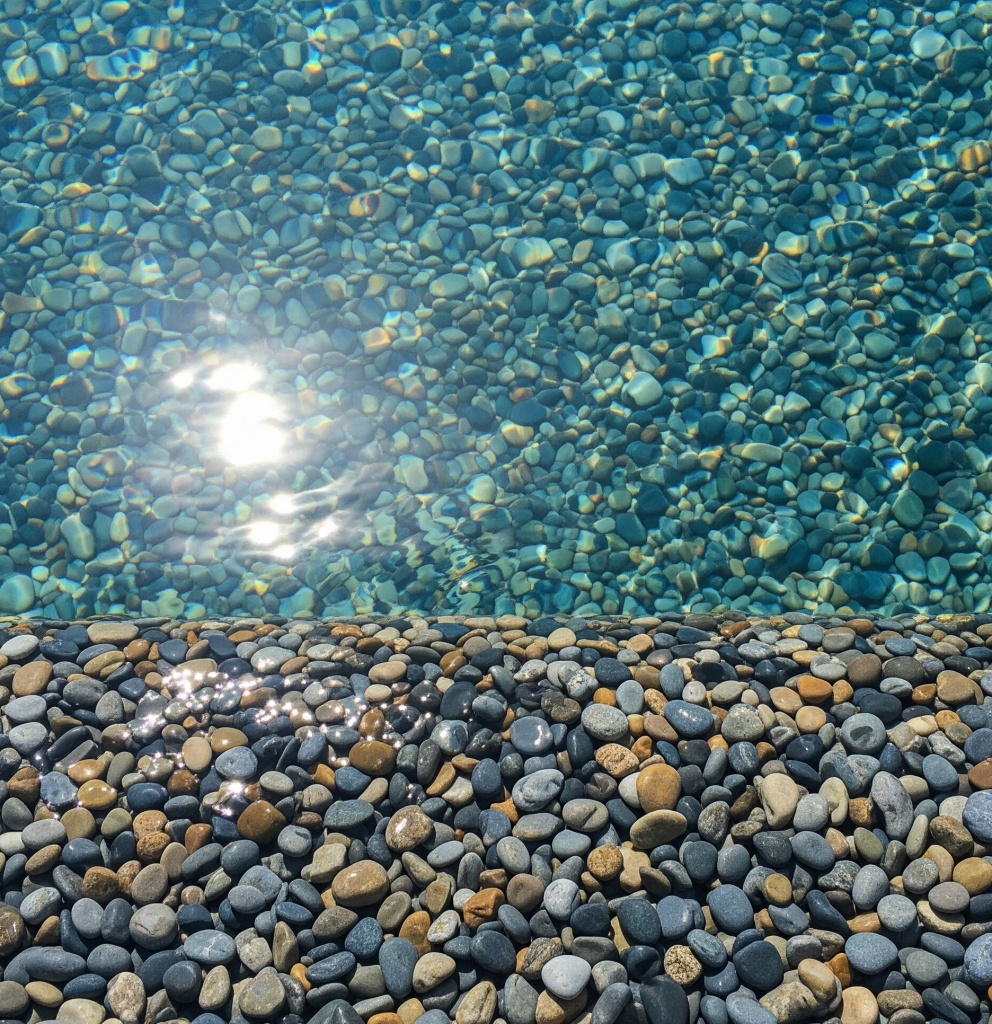Quartz and Pebble: The Modern Pool Finish and How They Compare to Plaster

In our previous post, we explored the most economical pool finish: Traditional Plaster. While plaster offers a low initial cost, we learned it demands strict chemical maintenance and has a limited lifespan (5-10 years).
Today, we dive into the two most popular and durable alternatives in the modern pool industry: Quartz and Pebble finishes. If durability, reduced maintenance, and superior aesthetics are your priority, one of these options is likely for you.
Quartz Finishes: The Ideal Mid-Range Solution
Quartz is essentially plaster fortified with small, colored quartz aggregates. These crystals are much harder than the marble aggregate used in traditional plaster, which makes the surface significantly more durable and less prone to etching and stains caused by water chemistry imbalances.
Key Advantages:
Enhanced Durability: Typically lasts 10 to 15 years, often double the lifespan of standard plaster.
Stain Resistance: The hard quartz crystals are non-porous and resist staining better than soft plaster.
Aesthetics: Available in a wide range of colors (blues, greens, grays), offering a more custom look than plain white plaster.
While quartz finishes are generally 15-30% more expensive than basic plaster, the added longevity and reduced need for maintenance usually offset the initial cost quickly.
Pebble Finishes: Maximum Durability and Natural Aesthetics
Pebble finishes are the top-tier option for pool surfacing. They consist of small, smooth pebbles (river stones) mixed with cement and applied over the pool shell. Because the material is primarily hard stone, it is incredibly resistant to chemical imbalances and etching.
Pebble surfaces provide a unique, natural, creek-bed look, often making the water appear deeper and more vibrant.
Key Advantages:
Exceptional Lifespan: Can last 20 years or more with proper care, minimizing future resurfacing costs.
Ultimate Resistance: Virtually immune to staining and chemical attack. This simplifies long-term water balance maintenance.
Texture: While less smooth than plaster, the pebbles are small and rounded, offering a non-slip surface. (Note: Mini-pebble options are available for a smoother feel.)
Pebble finishes are the most significant initial investment (often 2-3 times the cost of plaster), but they provide the lowest cost of ownership over the pool’s lifetime.
Quick Comparison: Plaster vs. Quartz vs. Pebble
| Feature | Plaster (Traditional) | Quartz | Pebble |
|---|---|---|---|
| Initial Cost | Lowest | Medium | Highest |
| Typical Lifespan | 5 – 10 years | 10 – 15 years | 15 – 25+ years |
| Stain Resistance | Low (High risk) | Medium | High (Very low risk) |
| Chemical Tolerance | Low (Very sensitive) | Medium | High (Very resistant) |
| Surface Feel | Smoothest | Smooth | Non-slip (Slightly rougher) |
Making the Right Decision for Your Pool
Choosing the right finish depends entirely on your budget, your tolerance for maintenance, and your long-term goals.
Plaster is the choice for lowest upfront cost, but demands vigilance and earlier renewal.
Quartz provides a great middle ground, balancing cost, durability, and aesthetics.
Pebble is the ultimate investment for longevity and low maintenance, offering the lowest cost of ownership over a 20-year period.
No matter which path you choose, the finish is the heart of your pool’s beauty and resilience.
Ready to Begin Your Project?
Don’t guess when investing in your pool’s future. Our experts can walk you through the samples, costs, and projected lifespan of each material. Contact us today for a personalized consultation and let us help you find the perfect finish for your backyard oasis.

